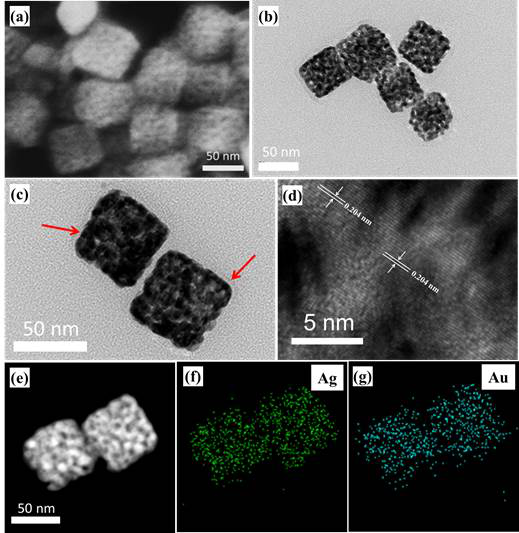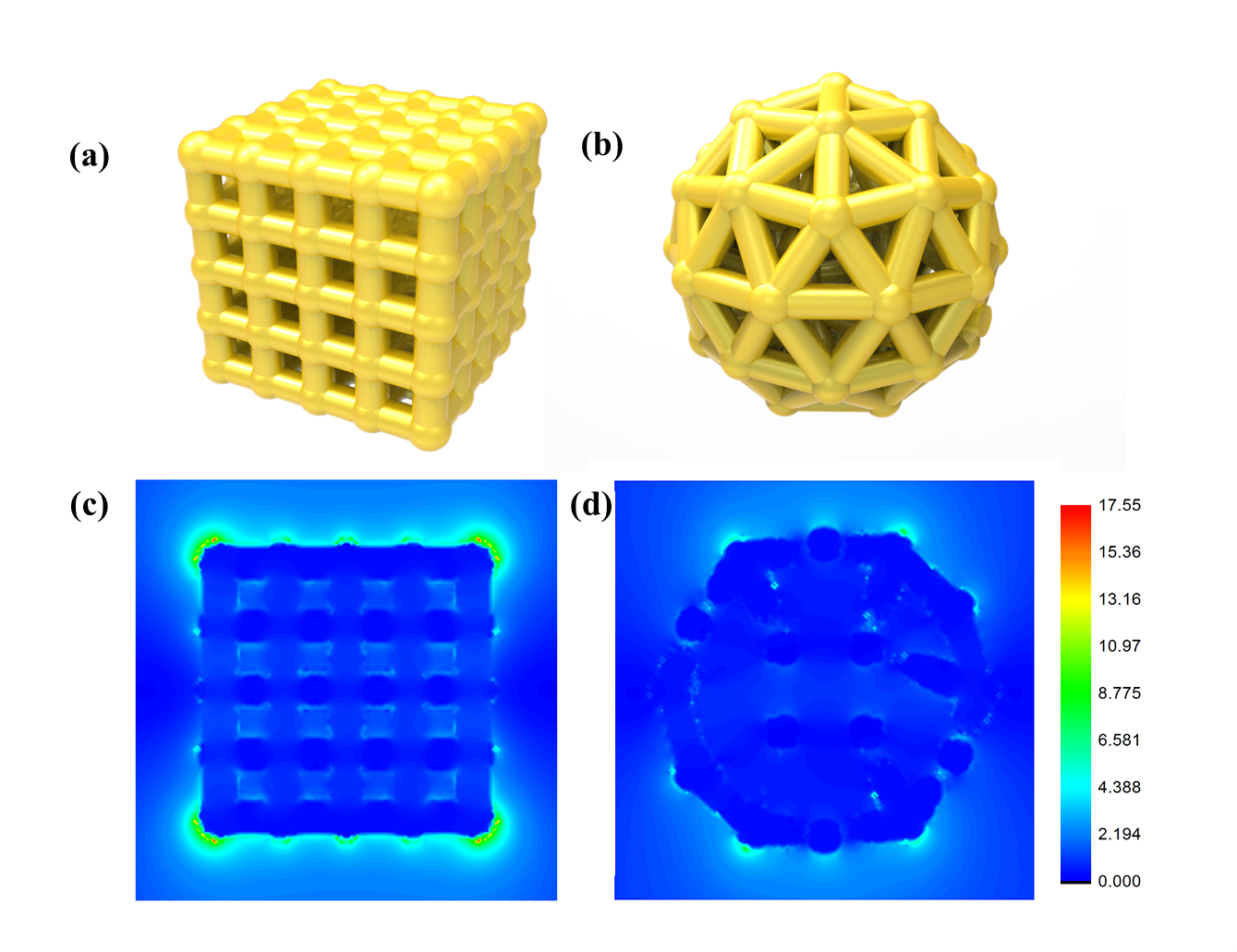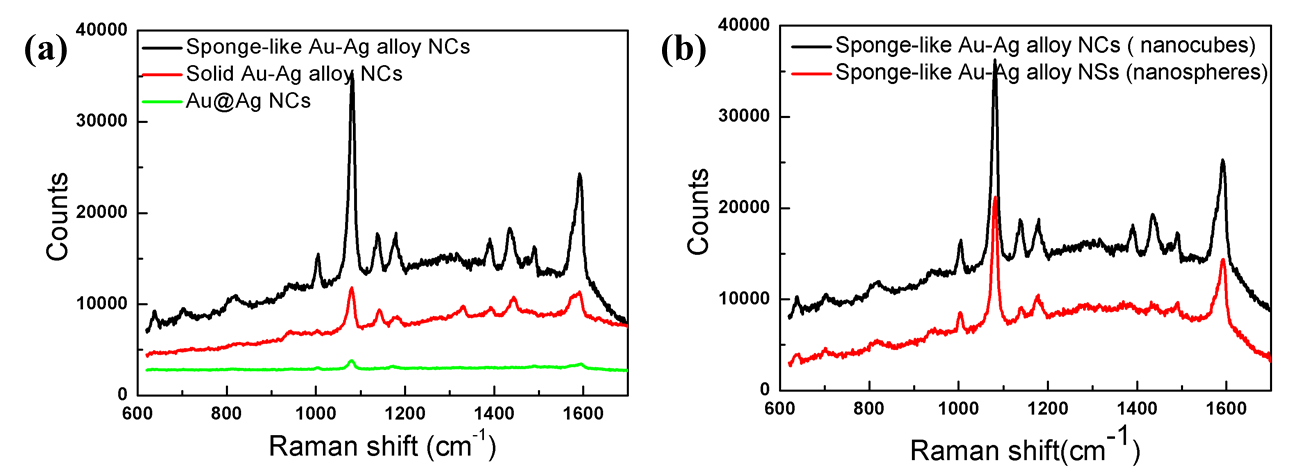
Recently, a research team led by Prof. LI Yue in Institute of solid State Physics, Hefei Institutes of Physical Science working in partnership with Prof. LI Cuncheng in University of Jinan, has revealed that the synthesized sponge-like Au-Ag alloy nanocubes (NCs) showed excellent Surface-Enhanced Raman Scattering, or SERS, performance.
Au-Ag bimetallic nanoparticles (NPs) have been talked a lot due to their unique novel tunable plasmonic properties compared to the monometallic counterparts. It has been recognized that these intrinsic properties also largely depend on the size and shape of such bimetallic NPs, and hence their controllable synthesis is of vital importance for discovering their properties as well as for achieving practical applications.
In the joint work, researchers presented for the first time an interesting SiO2-based template method to prepare new sponge-like Au-Ag alloy NCs.
They theoretically simulated the distributions of the local electric field described by E2/E02 of sponge-like Au-Ag alloy NPs by the finite-difference time-domain (FDTD) method.
Compared with sponge-like Au-Ag alloy NSs, the relatively shape corners and edges of sponge-like Au-Ag alloy NCs further largely increased the local electric field and a?ord more high-density "hotspots".
They found that such sponge-like Au-Ag alloy NCs showed excellent SERS performance with an enhancement factor of ~108, which can effectively detect 4-ATP at the concentration as low as 1×10-10 M..
In summary, this strategy reported here is universal and could be used to Au-Ag porous alloyed NPs with different shapes, which have important applications in plasmonics, SERS, drug delivery, photothermal therapy, and catalysis systems etc.
The findings were published online in Journal Materials Chemistry C entitled "Controlled Synthesis of Sponge-like Porous Au-Ag Alloy Nanocubes for Surface-Enhanced Raman Scattering Property".
This investigation was supported by The authors acknowledge financial support from the National Key Research and Development Program of China, the Natural Science Foundation of China, the Cross-disciplinary Collaborative Teams Program in CAS, and the CAS/SAFEA International Partnership Program for Creative Research Teams.

Figure 1. FESEM (a) and TEM (b) images of sponge-like Au-Ag NCs. (c) High-magni?cation TEM images of sponge-like Au-Ag NCs. The arrow in the inset of (c) indicates a thin SiO2 shell existed on the nanoparticle. (d) HRTEM image of a single sponge-like Au-Ag alloy NCs. (e) HAADF-STEM image of two sponge-like Au-Ag alloy NCs. (f and g) EDS elemental mapping of Ag and Au, respectively. (Image by ZHANG Tao)

Figure 2. Two models of sponge-like Au-Ag alloy NC (a) and NS (b) for the FDTD simulations. Distribution of the local electric field in the proximity of sponge-like Au-Ag alloy NC (c) and NS (d) under irradiation of a plane wave with wavelengths of 785 nm. The color bars represent the amplitude ratio of E2/E02 . (Image by ZHANG Tao)

Figure 3. (a) Raman spectra of 10-6 M 4-ATP on sponge-like Au-Ag alloy NCs, solid Au-Ag alloy NCs, and Au@Ag NCs. (d) Raman spectra of 10-6 M 4-ATP on sponge-like Au-Ag alloy NCs and NSs, respectively. (Image by ZHANG Tao)

86-10-68597521 (day)
86-10-68597289 (night)

52 Sanlihe Rd., Xicheng District,
Beijing, China (100864)

